 W
WThe History of Sweden from 1772 through 1809 is better known as the Gustavian era of Kings Gustav III and Gustav IV, as well as the reign of King Charles XIII of Sweden.
 W
WIn Swedish and Finnish history, the Age of Liberty is a half-century of parliamentary governance, increasing civil rights and decline of the Swedish Empire that began with Charles XII's death in 1718 and ended with Gustav III's self-coup in 1772. The shift of power from monarch to parliament was a direct effect of the Great Northern War, which was disastrous for Sweden.
 W
WBarnängens manufaktur, was a textile factory in the Barnängen area in Södermalm in Stockholm in Sweden, active from 1691 until 1826. Alongside its main rival Pauliska manufakturerna, it was the biggest factory in Stockholm during the 18th-century, and during the 1780s, it employed more people than any other business in the city, the majority of whom were women. The factory has been fictionalized in the novel Vävarnas barn by Per Anders Fogelström from 1981.
 W
WBollhuset, also called Stora Bollhuset, Bollhusteatern, and Gamla Bollhuset at various times, was the name of the first theater in Stockholm, Sweden; it was the first Swedish theater and the first real theater building in the whole of Scandinavia. The name "Bollhuset" means "The Ball House", and it was built in 1627 for ball sports and used in this way for forty years. The name Lejonkulan, however, was, in fact, the name of a different building, which was also used by the same theater in the 17th century.
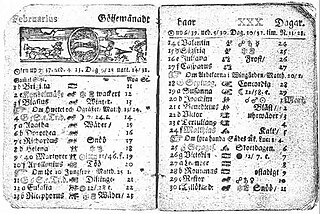 W
WThe Swedish calendar or Swedish style was a calendar in use in Sweden and its possessions from 1 March 1700 until 30 February 1712. It was one day ahead of the Julian calendar and ten days behind the Gregorian calendar. Easter was calculated nominally astronomically from 1740 to 1844.
 W
WCaroleans were soldiers of the Swedish kings Charles XI and Charles XII. In the late 17th and early 18th centuries, in order to compensate for its lack of manpower and resources, Sweden strove for innovative ways to make a more effective army. The tactics of Caroleans differed from those of Western European soldiers in their greater reliance upon pikes, rapiers, bayonets, and offensive strategy, which helped them to be victorious, even when greatly outnumbered, in many important Swedish battles. The Carolean army is regarded as one of the most effective military forces of their time.
 W
WThe Coup of 1756 was an attempted coup d'état planned by Queen Louisa Ulrika of Sweden to abolish the rule of the Riksdag of the Estates and reinstate absolute monarchy in Sweden. The attempted coup was exposed and subdued in 1756 shortly before it was due to be put in action. It caused a rift between the royal house and the parliament.
 W
WDecember Crisis (1768) was a political crisis which occurred in Sweden in December 1768 when Adolf Frederick, King of Sweden, demonstrated against his limited powers by refusing to sign state documents, thereby paralyzed the government and bringing about a new Riksdag of the Estates.
 W
WAnna Maria Rückerschöld, born Rücker, was a Swedish author who wrote several popular books on housekeeping and cooking in the late 18th and early 19th century. She was an advocate of women's right to a good education in household matters and propagated this view in public debate through an anonymous letter in 1770. Along with Cajsa Warg and other female cookbook authors, she was an influential figure in culinary matters in early modern Sweden.
 W
WThe Du Londel Troupe was a French 18th-century theatre troupe. From 1753 to 1771, it was active as the French Theatre of Sweden, where it played a great part in that country's theatre history.
 W
WThe French Theater of Gustav III was a French language theater active in Sweden between 1781 and 1792. The French theater company performed both before the Swedish royal court in the theaters of the royal palaces, as well as before the Swedish public in Stockholm. It is known to have played a significant part in the education of the pioneer generation of actors at the Royal Dramatic Theatre.
 W
WThe Great Northern War (1700–1721) was a conflict in which a coalition led by the Tsardom of Russia successfully contested the supremacy of the Swedish Empire in Northern, Central and Eastern Europe. The initial leaders of the anti-Swedish alliance were Peter I of Russia, Frederick IV of Denmark–Norway and Augustus II the Strong of Saxony–Poland–Lithuania. Frederick IV and Augustus II were defeated by Sweden, under Charles XII, and forced out of the alliance in 1700 and 1706 respectively, but rejoined it in 1709 after the defeat of Charles XII at the Battle of Poltava. George I of Great Britain and the Electorate of Hanover joined the coalition in 1714 for Hanover and in 1717 for Britain, and Frederick William I of Brandenburg-Prussia joined it in 1715.
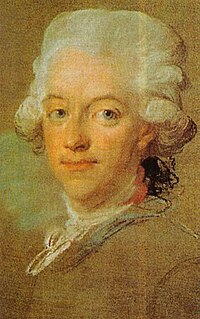 W
WGustav III of Sweden's coffee experiment was a twin study ordered by the king to study the health effects of coffee. Although the authenticity of the event has been questioned, the experiment, which was conducted in the second half of the 18th century, failed to prove that coffee was a dangerous beverage.
 W
WThe History of Sweden from 1772 through 1809 is better known as the Gustavian era of Kings Gustav III and Gustav IV, as well as the reign of King Charles XIII of Sweden.
 W
WHovpartiet was the name for a political group in Sweden during the age of liberty. It had the goal to strengthen royal power against the parliament of the Riksdag of the Estates. It is most known in history as the force behind Queen Louisa Ulrika's Coup of 1756, but it did in fact exist in some form or another from 1723 until Gustav III's Revolution of 1772 when its goal of an absolute monarchy was finally realized.
 W
WThe kurbits is an invented, fantastical symbol of vegetal fertility based on a gourd or pumpkin of biblical legend, principally used for ornamentation in Swedish folk art and on painted furniture and domestic objects. Very popular between 1720 and 1870, particularly in Dalarna and southern Norrland, the paintings and murals have mostly biblical motifs, such as "The Triumphant Entry of the Queen of Sheba Into Jerusalem", and the people and buildings depicted are as was locally fashionable at the time of painting. They were done by itinerant painters, mainly from Dalarna, who specialized in the style and whose signatures are to be found in many localities.
 W
WModern Swedish is the linguistic term used for the Swedish language from the Bible translation of 1526 to the development of a common national language around 1880. The period can further be divided into Early Modern Swedish (1526–1750) and Late Modern Swedish (1750–1880).
 W
WThe Passionsspelen på Stora Bjurum is a name for a famous incident in Sweden in 1738-1741, when the manor Bjurum in Västergötland became the center of a religious dissident sect. The dissident group was given support of the owner of the manor, countess Eva Margareta Stenbock. The movement excluded themselves from the church and practiced a form of socialism. In 1738, they were subjected to an investigation on behalf of the church, and the name of the incident refers to the passion play in which the female preacher Dordi Olofsdotter acted in the part of Christ. The movement was suppressed after Eva Margareta Stenbock subjected to reuniting with the church in 1741.
 W
WThe Revolution of 1772, also known as the Coup of Gustav III was a Swedish coup d'état performed by king Gustav III of Sweden on 19 August 1772 to introduce absolute monarchy against the Riksdag of the Estates, resulting in the end of the Age of liberty and the introduction of the Swedish Constitution of 1772.
 W
WThe Russo-Swedish War of 1788–1790, known as Gustav III's Russian War in Sweden, Gustav III's War in Finland and Catherine II's Swedish War in Russia, was fought between Sweden and Russia from June 1788 to August 1790.
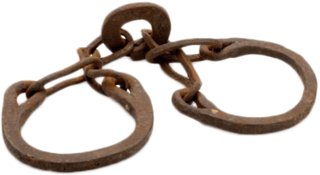 W
WThe Swedish slave trade mainly occurred in the early history of Sweden when the trade of thralls was one of the pillars of the Norse economy. During the raids, the Vikings often captured and enslaved militarily weaker peoples they encountered, but took the most slaves in raids of the British Isles, Ireland and Slavs in Eastern Europe. This practice lasted in the 6th through 11th centuries until formally abolished in 1335. A smaller trade of African slaves happened during the 17th and 18th centuries, around the time Swedish overseas colonies were established in North America (1638) and in Africa (1650). It remained legal until 1813.
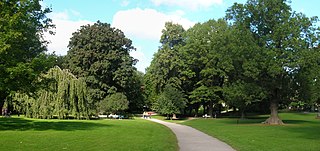 W
WThe Stenborg Company was a Swedish Theatre Company, active in Sweden and Finland in the 18th century. It was also called Stenborgska skådebanorna, Svenska komeditruppen and Svenska Comedien ('Swedish Comedy') or Svenska Teatern. It is one of the most famous theatre troupes in its country's history. In the period of 1754–73, between the closure of the first national Swedish theatre in Bollhuset and the foundation of the next, The Royal Swedish Opera and the Royal Dramatic Theatre, it was the only Theatre performing in the native language in Stockholm. It also has an importance for the history of Finland, being the first professional secular theatre troupe in this country. It was a traveling troupe in 1756–80 and then housed in several buildings.
 W
WThe Swedish Empire was a European great power that exercised territorial control over much of the Baltic region during the 17th and early 18th centuries. The beginning of the Empire is usually taken as the reign of Gustavus Adolphus, who ascended the throne in 1611, and its end as the loss of territories in 1721 following the Great Northern War.
 W
WSweden possessed overseas colonies from 1638 to 1663, in 1733 and from 1784 to 1878. Sweden possessed five colonies, four of which were short lived. The colonies spanned three continents: Africa, Asia and North America.
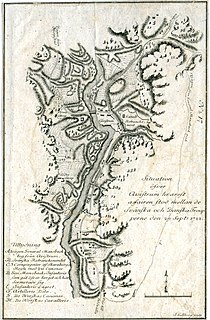 W
WThe Theatre War, Cowberry War, Cranberry War or Lingonberry War, was a brief war between Denmark–Norway and Sweden, starting on 24 September 1788, formally lasting until 9 July 1789. Although the decision to launch the attack was taken in Denmark, the majority of the attacking soldiers were Norwegians from the Danish-Norwegian army.
 W
WLa troupe du Roi de Suede, or Roi de Suede for short, was a French-speaking Swedish court theater, active at the Royal Swedish court from 1699 until 1706.
 W
WVadstena adliga jungfrustift or VAJS, was a Swedish foundation to support unmarried female nobles.